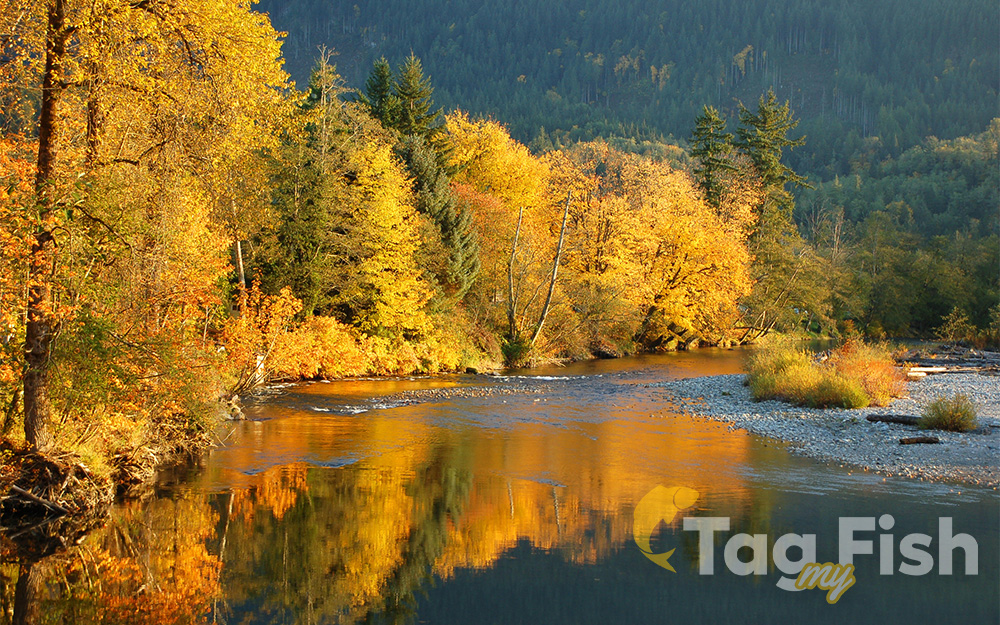Stillaguamish River

The Stillaguamish River, located in the northwestern region of the U.S. state of Washington, is a significant waterway known for its ecological importance and role in salmon recovery efforts. It is primarily formed by two main branches: the longer North Fork Stillaguamish, stretching 45 miles (72 km), and the South Fork Stillaguamish. These forks converge near Arlington. From this junction, the main stem of the Stillaguamish River flows for approximately 22 miles (35 km) before reaching Puget Sound.
The river’s watershed encompasses a portion of the Cascade Range north of Seattle, contributing to its diverse fish populations and ecological richness. The Stillaguamish River is crucial for various salmon species, supporting their migration and spawning habitats. Its waters are vital for ongoing conservation and restoration efforts aimed at ensuring the health and sustainability of salmon populations in the region.



